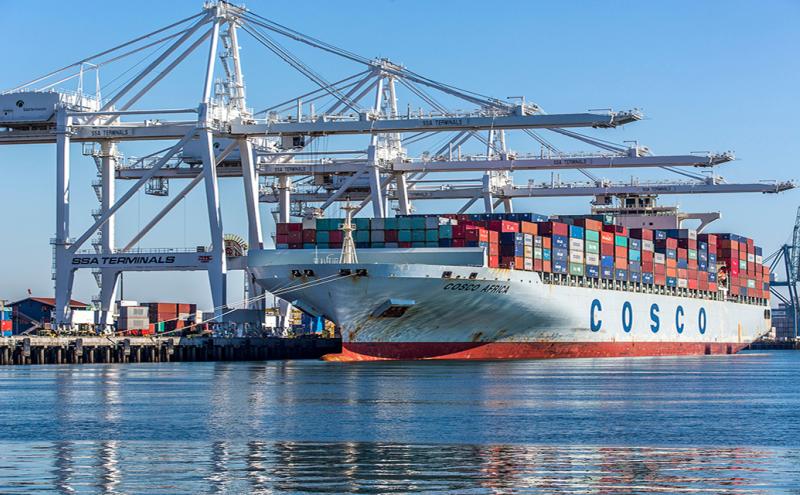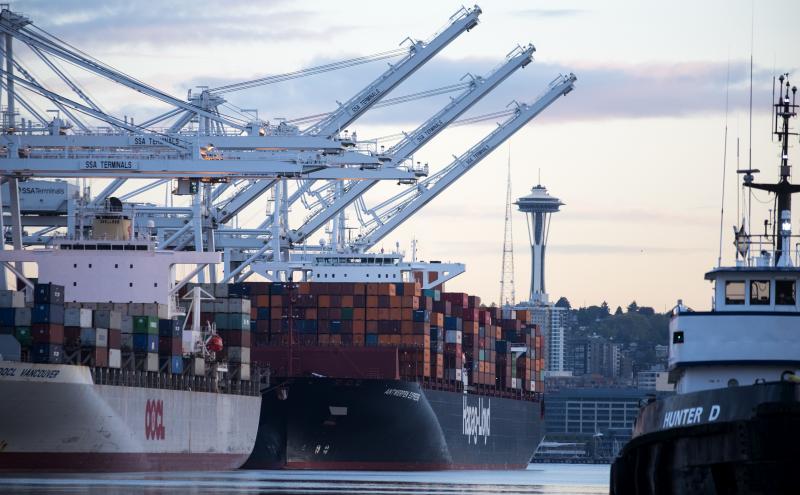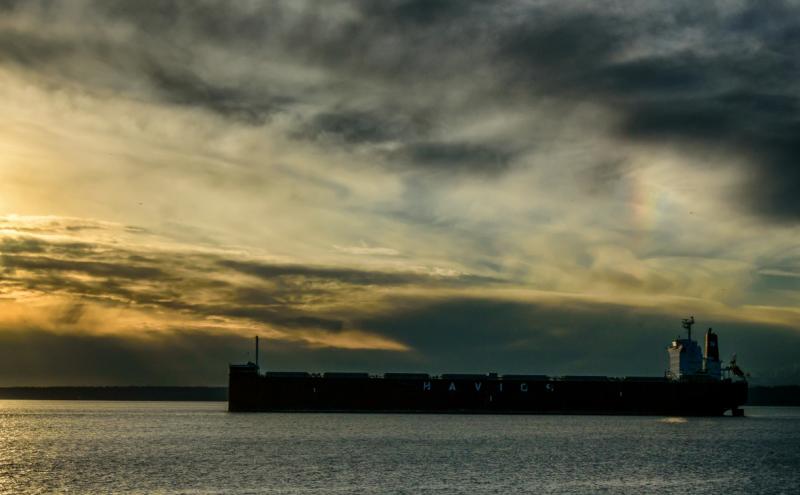
In Puget Sound, big ships coming and going are a daily part of marine traffic. But how much do you really know about the marine cargo that keeps the economy of our region afloat?
On World Maritime Day, learn more about how the maritime industry fuels the PNW economy. Impress your friends and coworkers by dropping some of these amazing facts on your next Zoom meeting!
PNW leads the way
The Northwest Seaport Alliance (NWSA) is a joint marine cargo operating partnership between the Ports of Seattle and Tacoma — the first of its kind in North America. This innovative model has proven to be an economic and operational success, making the combined harbors the seventh largest container gateway in the United States, with:
- 3.3 million twenty-foot equivalent units (TEUs) carrying 25.5 million metric tons of containerized cargo in 2020
- A majority of this cargo was international, though 685,000 TEUs were shipped to and from Alaska and Hawaii
* Domestic terminals handle more than 80% of containerized shipments between Alaska and the lower 48 states - Sixteen international container carriers provide regular weekly services to key markets in Asia, Europe, Central and South America, and Oceania
- Eighteen regularly scheduled liner services connect cargo to over 60 direct international ports of call
- Four domestic carriers provide regular weekly services to Alaska and Hawaii
- An economic impact study released in 2019 highlighted impact (both indirect and induced): a total of 58,400 jobs, over $4 billion in labor income, and almost $12.4 billion in business output. Learn more
* 40% of the jobs in Washington state are tied to trade
Source: Northwest Seaport Alliance
1. What is a TEU?
Malcom McLean was the visionary behind the container, which reduced the cost of freight transportation. TEU stands for twenty-foot equivalent unit, a standard that can be used to measure a ship’s cargo capacity. One TEU is 20 feet long and 8 feet tall.
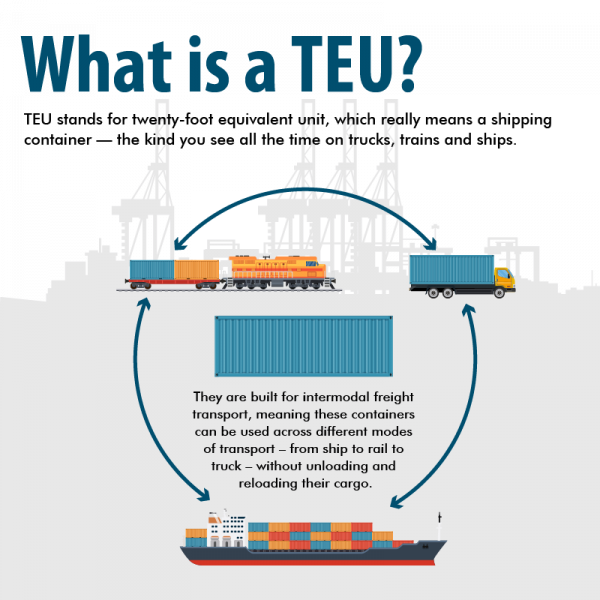
Ports and ships around the world are measured by their TEU volume, a metric that is used globally. The largest port in the world, Shanghai, China, handled around 43.5 million TEUs in 2020. Worldwide, the alliance ranks in the top 60.
A little closer to home, here are the top gateways in the U.S. by their 2020 annual container volume:
- Los Angeles /Long Beach 17.3 million TEUs
- New York/New Jersey 7.6 million TEUs
- Savannah, Georgia 4.7 million TEUs
- The NWSA (Seattle and Tacoma) 3.3 million TEUs
Fun Fact:
One 40-foot container can hold more than 8,000 shoe boxes. That’s a lot of shoes!
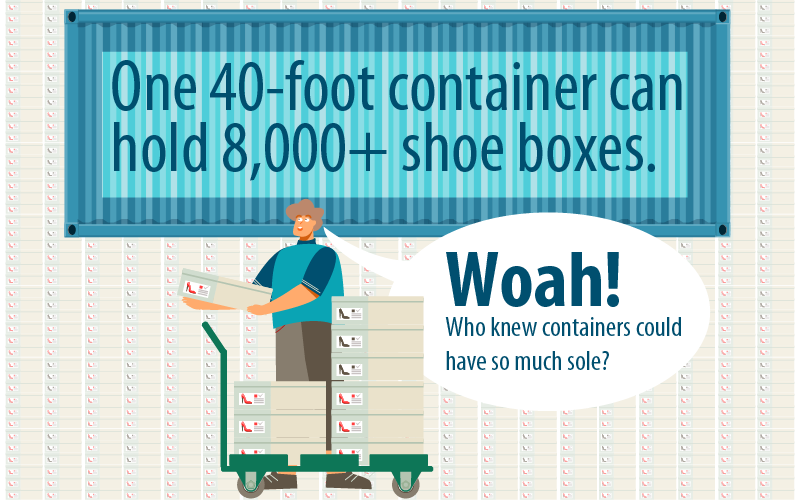
2. What were the NWSA’s top maritime cargo exports in 2020?
By value
- Soybeans — $2.1 billion
- Other Machinery — $1.2 billion
- Corn — $771 million
- Frozen Potato Products — $760 million
- Hay and Forage — $713 million
By Volume (TEUs)
- Hay and Forage — 157,673 TEUs
- Frozen Potato Products — 57,042 TEUs
- Paper and Paperboard — 44,952 TEUs
- Scrap Paper — 38,816 TEUs
- Other Foodstuffs — 32,072 TEUs
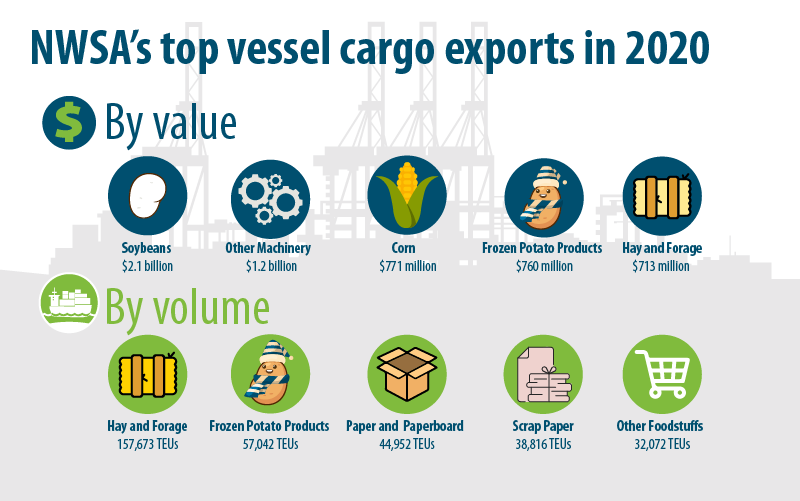
Fun Fact:
Washington state is the top U.S. producer of apples, blueberries, hops, pears, spearmint oil, and sweet cherries.
(Sources: Northwest Seaport Alliance 2020 Annual Report and Washington State Department of Agriculture)
3. Where in the world do containerized goods come from?
While 90% of NWSA international container volumes travel from Asia and the Pacific, the Alliance serves markets all around the world, with weekly services to/from Europe, Central and South America, and Oceania.
The top five countries of origin by TEU volume in 2020:
| China | 674,044 |
| Vietnam | 127,732 |
| Japan | 76,898 |
| Taiwan | 64,198 |
| Republic of Korea | 50,421 |
Fun Fact:
Chile was our tenth largest origin country by TEUs in 2020, followed by Italy, Germany, and Guatemala.
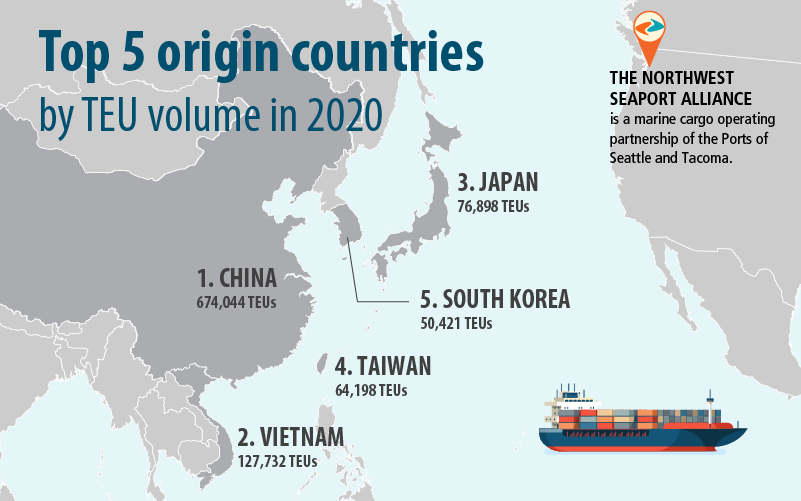
4. How do PNW goods reach the rest of the world?
The Northwest Seaport Alliance provides a range of services like shipping breakbulk, project cargo, heavy lift cargo, and autos — including helicopters —with regularly scheduled services to/from Asia, Europe, and Oceania, and via transshipment to anywhere in the world. In 2020, the alliance handled 291,623 metric tons of breakbulk and 156,205 automobiles.
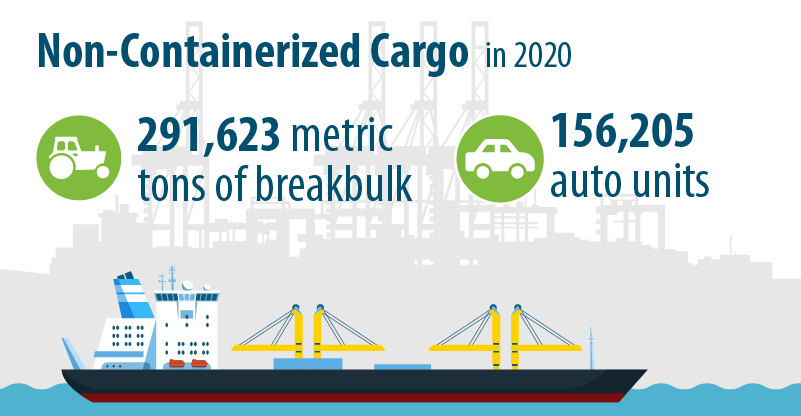
5. Washington products like to chill out
The Northwest Seaport Alliance is the nation’s #2 gateway for containerized refrigerated exports and fourth in the U.S. for all containerized reefer cargo.
Top commodities
- Processed potatoes
- Vegetables
- Fruits
- Meat
- Seafood
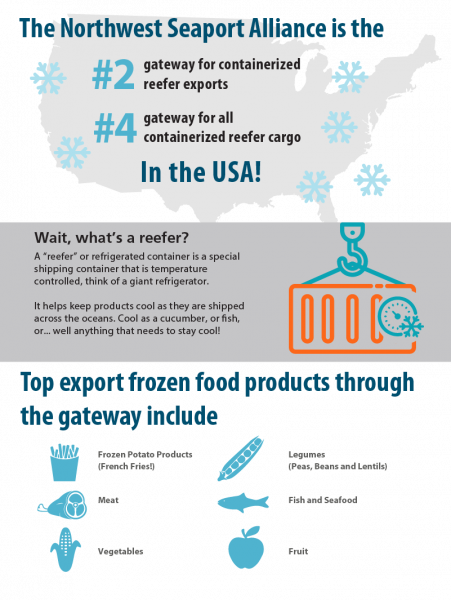
Top photo credit: "Park here for the night" by matthucke is licensed under CC BY-NC-SA 2.0

